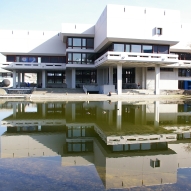Zusammenfassung
The main challenges for patients undergoing awake craniotomies include anxiety and fears, terrifying noises and surroundings, immobility, loss of control, and the feeling of helplessness and being left alone. In such situations, psychological support might be more helpful than the pharmacological approach. With adequate therapeutic communication, patients do not require any sedation and no or ...
Zusammenfassung
The main challenges for patients undergoing awake craniotomies include anxiety and fears, terrifying noises and surroundings, immobility, loss of control, and the feeling of helplessness and being left alone. In such situations, psychological support might be more helpful than the pharmacological approach. With adequate therapeutic communication, patients do not require any sedation and no or only low-dose opioid treatment during awake craniotomies, leaving patients fully awake and competent during the entire surgical procedure without stress. This approach can be termed "awake-awake-awake-technique".




 Altmetric
Altmetric